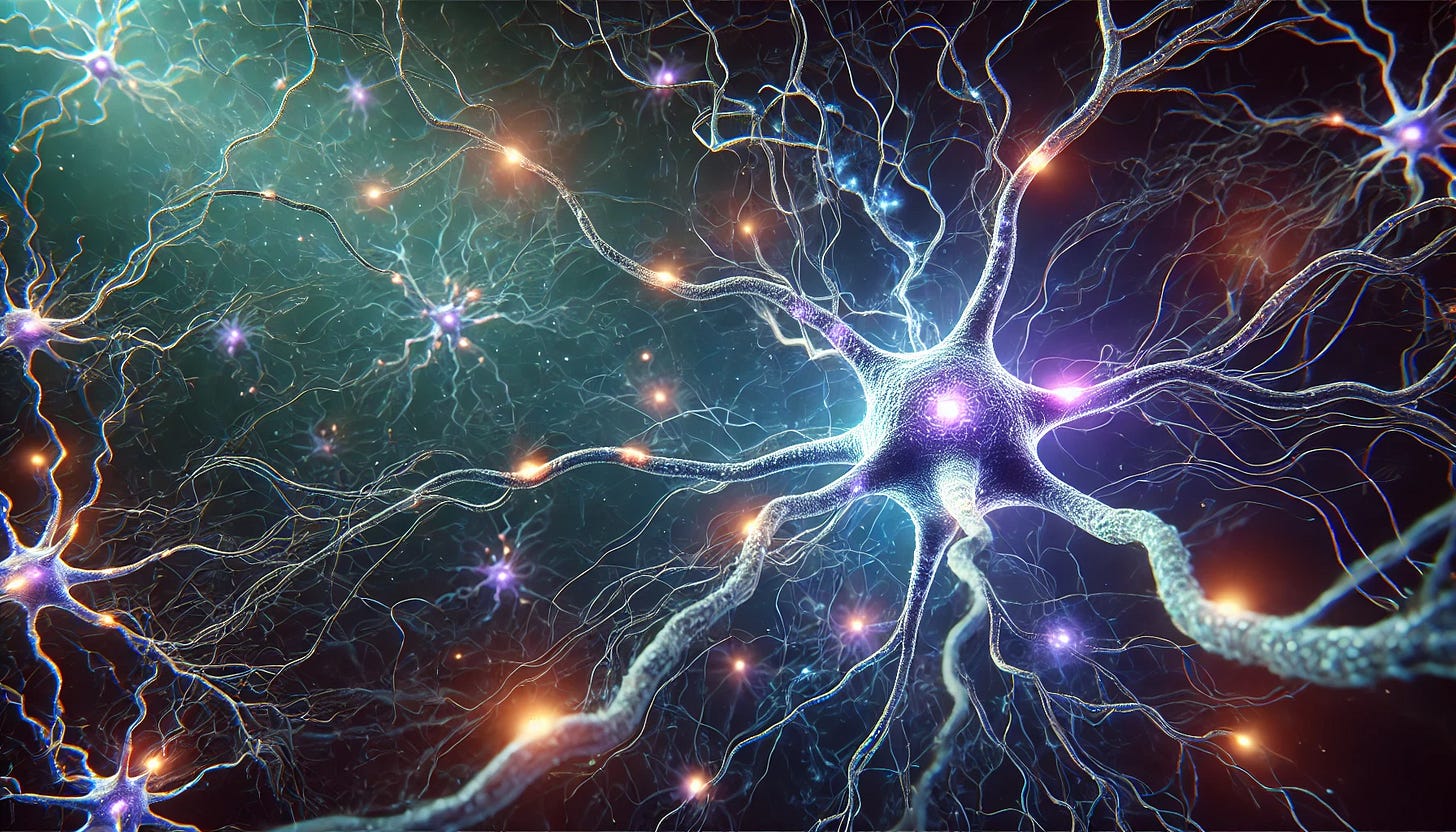Use forced mental connections to create your new ideas
The harder it is to make the connection—the better the idea
This article explains how making hard connections in your thinking adds more value than going for quick and easy connections. It contains two examples to show you.
New ideas aren’t just luck. They happen when your brain pulls together pieces from different places. It’s like fitting parts of a puzzle—things that don’t seem to go together until they do.
The more connections you make, the easier it gets.
It’s why learning a skill, seeing new things, or pushing yourself with hard tasks sparks creativity.
Because that’s when you’re forging new neural pathways in your brain. Pathways that existed, but weren’t being used. Now they are.
As your neurons fire together, they wire together. And soon your brain can jump between ideas faster and sharper.
Think about solving a puzzle. Or a problem you’ve never faced before.
Your brain kicks into gear. Different parts, the ones that handle memory and decision-making, work together.
And from that, something new comes. Incremental progress towards the answer.
It’s the same with learning a new language or picking up an instrument. Each challenge shapes the brain, makes it stronger and more flexible.
Powerful thinking comes when you force things together that don’t belong. Two ideas that don’t fit. A concept out of place. Two seemingly unrelated items.
But you make them fit. You tie them together somehow. And in that clash, something new is born.
You broke out of your usual way of thinking. You saw things differently, and from that, new answers came. This is how breakthroughs happen.
At the heart of it, forcing new connections is deliberate. You take ideas that don’t belong and make them belong.
Innovation comes from putting two things together that no one else thought to in your situation.
This way of thinking shatters barriers. Opens new doors.
It’s how you solve problems that seem impossible. You don’t stick to the obvious; you look beyond it.
This kind of thinking is what some call divergent. It pulls the brain in directions it rarely goes. Searching for alternative paths. And new answers.
When you force connections, you aren’t just thinking creatively, you’re making the mind explore places it hasn’t gone before.
That’s where brilliant solutions come from. And how real innovation happens.
In the end, it’s simple.
The more you push your brain, the more ideas it can make. Creativity thrives on those fresh paths you build in your mind.
Try this mental connecting exercise
If I asked you to cross a car with an aeroplane, that’s an easy connection to make. You might suggest a flying car, or a small one-person aeroplane that can land on the driveway of your house.
These are ideas anyone can come up with.
Let’s try making some hard connections. We’ll relate it to writing on Substack to get more subscribers. Here you go…
What’s a connection between articles that appeal to subscribers and breakfast cereals?
The connections aren’t immediately obvious, are they?
Here are some example connections from me:
Households often have several types of breakfast cereals to suit individual tastes from day to day. Posts should similarly offer a variety of content. Some posts can be light and entertaining, while others can be more in-depth and informative, and appeal to different reader tastes.
Just as some cereals provide nutritional value information on the box, your post could explain briefly how the content enriches knowledge or adds value in some way.
A bowl of cereal contains small, easy-to-eat pieces. Posts should be similarly digestible. Breaking down complex ideas into manageable chunks that are easier for readers to engage and understand.
Cereals are eaten as a single course – not over several courses. Posts should deliver enough value to feel complete, without requiring readers to plough through more than they need.
Just as some cereals have a long shelf-life and others go stale quickly, blog posts can be evergreen or time-sensitive. Write content that remains relevant over time to maintain long-term subscriber engagement.
Another hard connecting question around a similar topic is this…
What’s a connection between acquiring more Substack subscribers and giraffes?
Some suggestions here are:
Giraffes stand tall above all other animals. Your Substack needs to rise above the competition to attract subscribers. How could you develop a unique content, style, or voice that helps you stand out in a crowded space?
Giraffes use their long necks to access food in places others can't reach. Similarly, reach out to untapped audiences or niches to expand your Substack's subscriber base, targeting markets others may overlook.
Giraffes can see predators from a great distance. Effective promotion and collaborations can increase your Substack visibility, helping potential subscribers find you from afar.
Giraffes have evolved to thrive in diverse environments, adapting their feeding habits based on availability. Your Substack must also adapt. How are you adjusting content based on reader preferences, trends, and feedback to grow your subscriber list?
Just as giraffes search for the best leaves as nourishing content for themselves, your Substack needs to provide valuable, high-quality content that “feeds” your readers' needs, keeping them coming back for more. What are you doing in this regard?
When you practise making hard connections for yourself, it can relate to any killer question you want to pose.
And it won’t just develop your freaky thinking skills. It will also physically develop your brain…






Yes! And why is this not more wide-spread? I had my 5th graders using this concept 35 years ago, and it’s the basis for lots of writing, and in my mind, especially picture books, including most of mine. Thanks for the reminder we can use it in all our writing. Glad to discover you here!